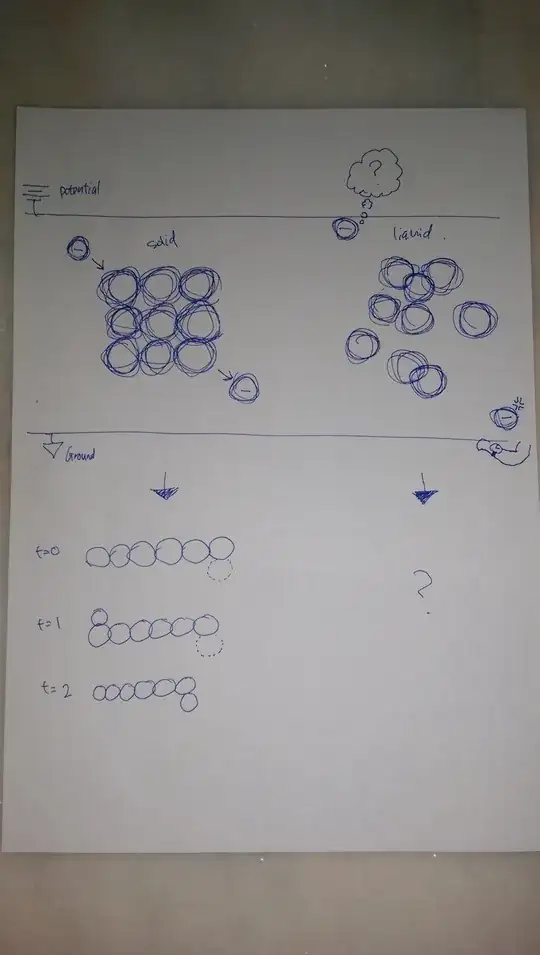I've learnt in classroom that the requirements for electrical current to flow in a circuit are as follows:
there must be a closed conducting path between negative and positive terminals
there must be a potential difference across the terminals
A copper wire is solid meaning all the atoms are very close to each other and don't move around very much and copper atom have valency electrons to donate around easily.
In a liquid solution the ions are constantly moving around finding new neighbors each time, my question is suppose we introduce 2 opposite charge electrodes into the solution how can the first requirement be met in these random chaos?
If current can flow under the above mentioned condition can it do so in plasmas which is much more spacious, random and chaotic than liquid?
Note: I'm more interested in the quantum behavior like how the ion finds suitable neighbors is it magnetism at work as it is drawn to a positive ion since itself is negatively charge.
I've provide a drawing to help in my understanding, it is not to scale and I know about uncertainty principle.
